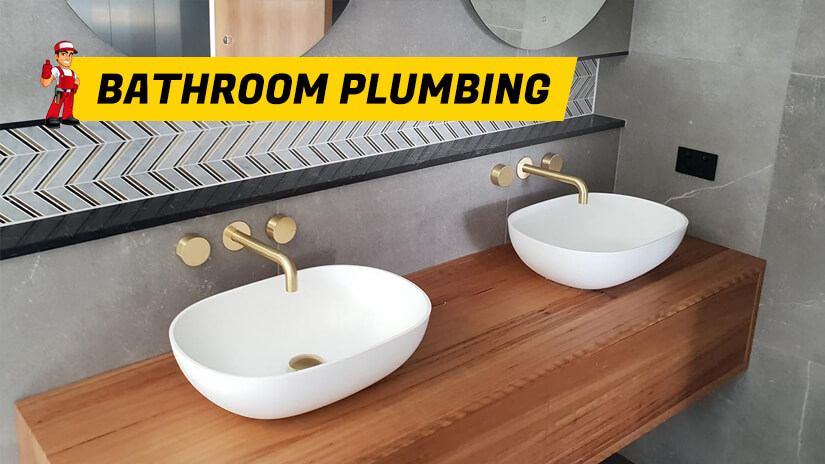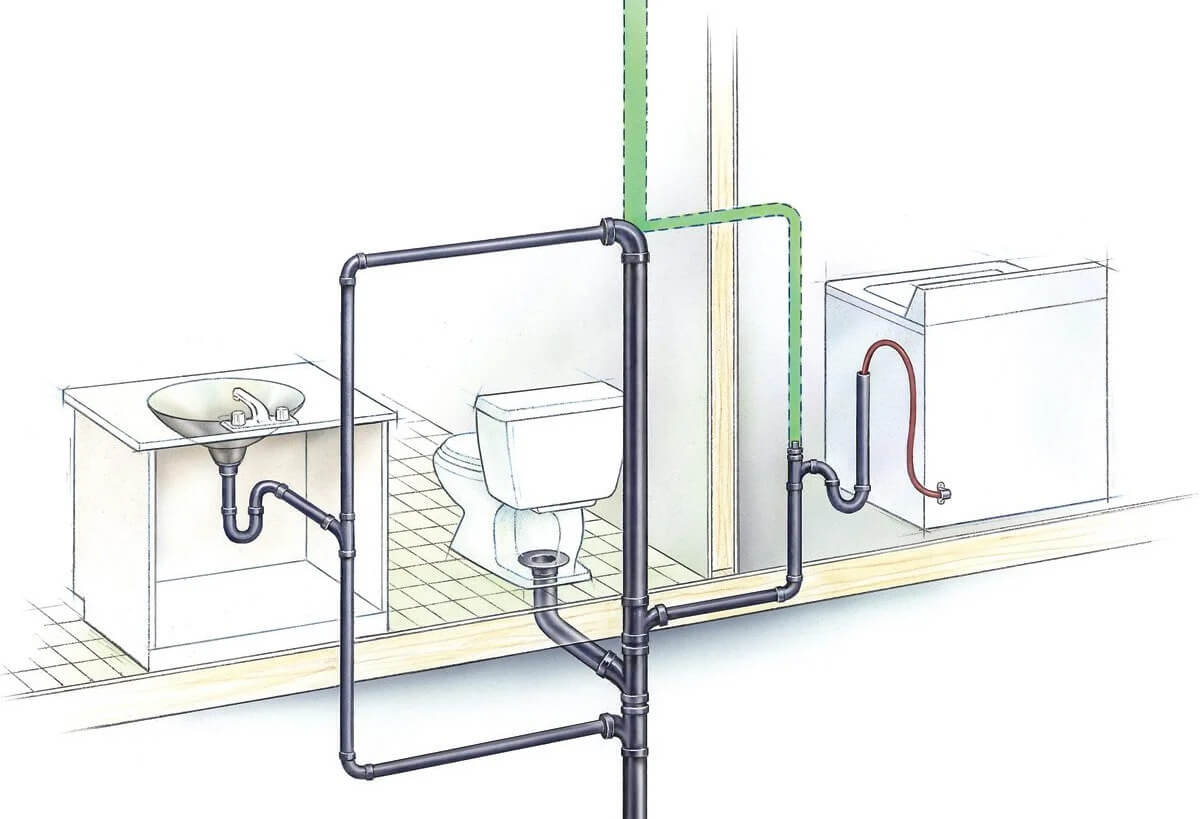If you’re not familiar with plumbing, explaining an issue to a plumber can be tough. By learning about the different parts and fixtures in your bathroom, you’ll be able to describe what’s going on with your sink plumbing more accurately to a plumber.
This will help them get to the root of the issue quicker and provide better service for you.
Bathrooms are packed with drains and fixtures, possibly more than any other room in your house. You’ve got your main drain, sinks, faucets, and shutoff valves, just for starters. Add a bath, shower, toilet, and sometimes even two sinks, and you’ve got quite the plumbing setup in one room.

Let us explain the basics of sink plumbing!
Shut Off Valve
Shut-off valves are part of most plumbing systems. They allow you to quickly shut off the water from sections of your pipes during repairs and maintenance.
While there are many valves you may use, you will depend on your plumbing system. Many shutoff valves use compression fittings to be installed onto the water pipes without soldering. But you will have to turn off the water to the house to replace a shutoff valve.
No matter what kind you have at home, all shutoff valves do the same job: they stop the water flow.
If you experience a leak, for example, in your sink faucet or under your bathroom sink, then you can quickly shut off the valve. The shutoff valve will further prevent water from dripping and damaging your vanity unit.
When you decide to replace a tap or water line, it is a good idea to simultaneously replace the valve and the narrow supply tubes. If your faucets are getting old, worn out, and leaky, your valve may also be.
Water Supply Pipes
Water supply pipes that run through the bathroom wall or floor send potable water to the taps. They link to the valves if you need to shut off the water.
Pipes can be made from various materials, including Flexi hoses. Let’s look at a few common ones:
Galvanised Steel
These pipes are crafted from steel and then covered with a zinc coating. The coating will prevent the pipe from eroding from water flowing through it. These pipes used to be extremely popular, but superior options are now available. However, you may still find it in some older homes built before the 70s.
These pipes can last in your home for up to 50 years. After that, they are unlikely to remain an effective way of accessing water supply, and you should consider replacing them.
Copper
Copper pipes are often used for both cold and hot water systems. They used to be common for gas piping too, though that’s changed. While copper works great both above and below ground, underground use might need a protective sleeve to fend off corrosion.
Copper pipes can also last up to 50 years. However, as time passes, they may start thinking. This can lead to tiny leaks, which can have enormous consequences. Such little leaks are tricky to locate and, therefore, fix.
This is largely why copper has fallen out of favour, giving way to plastic pipes in our homes.
PVC
PVC stands for polyvinyl chloride, and this type of pipe is currently wildly popular. They can be used in many situations, from water mains to drainage pipes.
They come in many thicknesses and colour options, which serve many purposes. For example, purple PVC pipes with black writing denote being used for reclaimed water.
When copper became less popular, PVC was one of the first plastic styles to replace it.
The drawback of PVC is that heat can affect it. While it’s fantastic for cold water, it’s not great for hot water.
Sink Pop-Up
When talking about a pop-up sink, this refers to parts both below and above the sink. These include a horizontal rod and a tailpiece. The rod pops up and down the sink plug or the sink stopper either up or down.
Remove the sink stopper and remove any gunk to unblock this drain.
P-Trap
Many plumbing fixtures contain a p-trap. The name comes from how it looks – much like the letter P.
The p-trap is the curved section of the pipe that holds water every time you use your bathroom drain.
The purpose of the p-trap is to prevent sewer gas from travelling up the pipeline and into your home. Gravity traps water in the p-trap, a barrier against sewer gases.
The P trap seals the drain’s opening, thus preventing nasty smells from entering your home through the pipes. However, the curve can be a prime place for sink clogs to build up.
There are two sections to a p-trap: the u-bend and the trap arm. These two curved pipe sections connect your sink to the sewer line. These can easily be replaced if you find them broken in your sink.
Need a Plumbing Service?
Drain Waste Vent System

The drainage system has a drain waste vent (DWV) system that carries away any waste from your bathroom. This includes sewage as well as water that has gone down the drain.
This is connected to the drain waste pipes, and any sink is connected to the main drain pipe. If you need to snake the drain in your bathroom, this is the drain pipe you will use.
It serves the vital purpose of maintaining the correct pressure in your bathroom plumbing. This will aid in your fixtures draining effectively.
Now that you know some of the terminologies for plumbing in your bathroom, you should be able to explain your plumbing issues better.
If you’re having trouble with your plumbing or drains, give us a call at Fixed Today. We offer straightforward quotes—what you see is what you get, with no hidden costs or sneaky fees.
When you reach out to us, we can have a local plumber at your place the same day to tackle your sink plumbing needs. We ensure friendly, efficient service and won’t cut corners. Your satisfaction is our top priority. Get in touch to have all your bathroom plumbing sorted.














